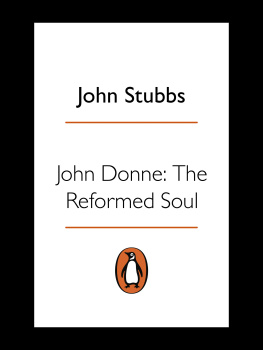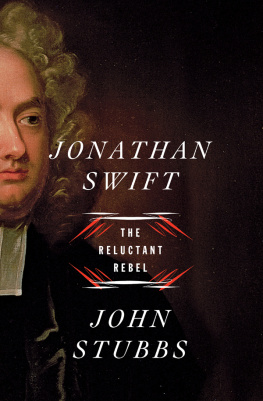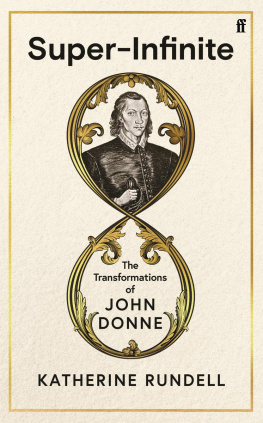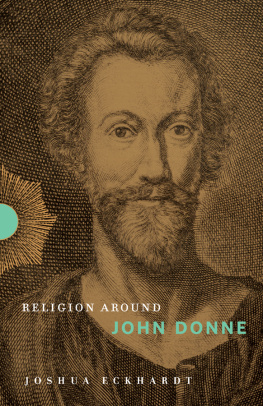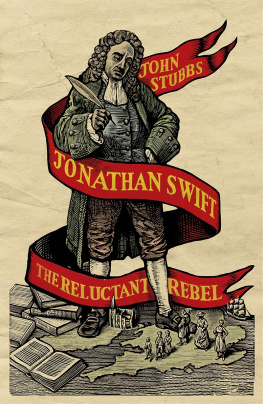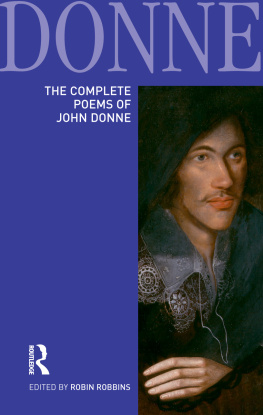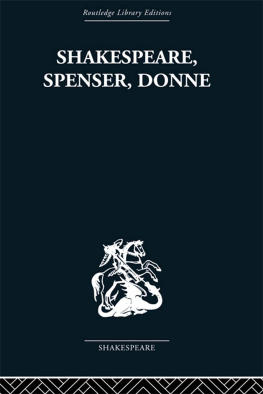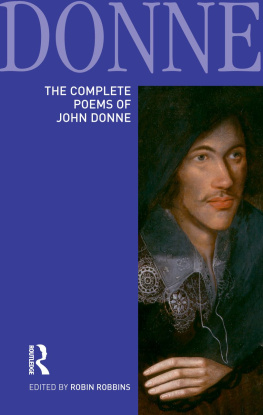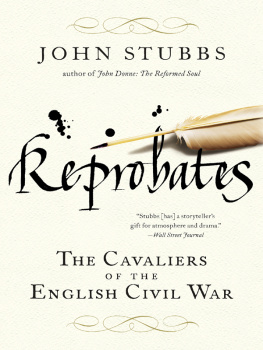Donne
Donne
The Reformed Soul
JOHN STUBBS
VIKING
an imprint of
PENGUIN BOOK
VIKING
Published by the Penguin Group
Penguin Books Ltd, 80 Strand, London WC2R 0RL, England
Penguin Group (USA) Inc., 375 Hudson Street, New York, New York 10014, USA
Penguin Group (Canada), 90 Eglinton Avenue East, Suite 700, Toronto, Ontario, Canada M4P 2Y3
(a division of Pearson Penguin Canada Inc.)
Penguin Ireland, 25 St Stephens Green, Dublin 2, Ireland (a division of Penguin Books Ltd)
Penguin Group (Australia), 250 Camberwell Road,
Camberwell, Victoria 3124, Australia (a division of Pearson Australia Group Pty Ltd)
Penguin Books India Pvt Ltd, 11 Community Centre,
Panchsheel Park, New Delhi 110 017, India
Penguin Group (NZ), cnr Airborne and Rosedale Roads, Albany,
Auckland 1310, New Zealand (a division of Pearson New Zealand Ltd)
Penguin Books (South Africa) (Pty) Ltd, 24 Sturdee Avenue,
Rosebank, Johannesburg 2196, South Africa
Penguin Books Ltd, Registered Offices: 80 Strand, London WC2R 0RL, England
www.penguin.com
First published 2006
1
Copyright John Stubbs, 2006
The moral right of the author has been asserted
All rights reserved
Without limiting the rights under copyright
reserved above, no part of this publication may be
reproduced, stored in or introduced into a retrieval system,
or transmitted, in any form or by any means (electronic, mechanical,
photocopying, recording or otherwise), without the prior
written permission of both the copyright owner and
the above publisher of this book
EISBN: 9780141902418
For Rob
Two Religions cannot be suffred in one kingdome: for diversities
cause factions, garboiles and civill warres, which never end but with
the subversion of the commonwealth
Sir William Vaughan, The Golden Grove [1608]
This house thus batterd downe, the Soule possest a new.
Donne, Metempsycosis
We are all mere nuggets of incense on the one altar. Some burn down
now, some later there is no difference.
Marcus Aurelius, Meditations
Contents
A Note on Conventions
During the period in which this book is set, the year changed in March rather than in January. We know that Donne was born between January and June, but the year of his birth would depend on whether his birthday fell before or after 25 March. If before, he was born in 1571, according to the Old Style calendar. If after, he was born in 1572. This book adopts the now conventional New Style calendar, which dates the start of each year from 1 January. The year of Donnes birth is thus given as 1572 rather than 1571.
Quotations from early modern texts retain the original spelling and punctuation except for the long s, and except in instances that would be unintelligible without much hard work on the part of the reader. Edward Alleyns sputtering, outraged letter to Donne, for example, is fully modernized. The hope is that readers will get a feel for how very different early modern English looks and sounds to the contemporary language, but without having to stop in their tracks every twenty seconds. As a general guideline, however, it should be noted that i at the beginning of a word frequently means j (Ianuarie, Iohn) and u in the middle of a word frequently means v (couer, aduise). Than is also generally spelt as then.
Superscribed numerals in the text refer to notes printed at the end of the book. These notes are purely bibliographical and evidential for the most part, and only very occasionally discursive; they should not be seen as interruptions to the flow of the text. Readers concerned with just following the story need only consult them if they wish to see exactly where a quotation comes from, or would like suggestions on further reading.
Introduction
One August day in 1532, a fight broke out between two priests in a parish church in London. The chronicles do not specify exactly why the brethren fell at variance. There is no mention of whether a brawl went on for some time, the men huffing and puffing in their heavy woollen robes; or whether a temper snapped suddenly and a single blow decided matters. But one of the clerics did draw blood, and those who heard the commotion and came running were appalled by what they found. The wriggling pair were split up and carted off to prison.
Christian rituals and practices at this time were part of the peoples biological rhythms. The religious edifices that put men and women in touch with their maker were decorative, adornments of the earth, but also wholly functional, necessary fixtures of daily existence. Crosses stood on almost every corner, Londons skyline bristled with steeples. In 1532, the main aerial of the Christian Church was still half a continent away, in the Vatican: England, officially, was a Roman Catholic nation. Yet its clergy in London were not universally revered. For those unhappy with the supremacy of Rome, the summer punch-up between two supposed men of God was one further small but distinct signal that radical change was necessary to the way the country worshipped. The Church authorities themselves took a serious view of the incident. When blood was spilt in a sacred building by two priests, no less grave measures were required to make the place fit for worship again.
All Hallows Church in Bread Street, where the scuffle took place, was closed for a month. No services were sung or said until it was re-sanctified, and in the middle of October the offending priests were brought to the grounds of St Pauls Cathedral, not far to the east, to perform an act of penance. Prayers were said, General satisfaction was expressed among the faithful: a wrong had been righted, and children had been able to jeer and throw mud. Yet such corrective ceremonies were not enough to appease or divert a multitude of protest against Catholic tradition. The two penitents were being marched against a Protestant movement that saw the clergy as inherently corrupt and spiritually inadequate; against an aspiring class that resented the power, wealth and influence of the old Church; and at the head of the crowd, a King who wanted a divorce which the Pope refused to grant. The following year, England split with Rome, Henry VIII married Anne Boleyn and crowned her Queen, and Roman Catholicism in England began to be dismantled.
Forty years later, Bread Street was a modestly affluent area, in which merchants were the most prominent residents. It had fine inns, good places for carriers and travellers to spend an evening or stop off for the night. It buzzed with trade and good living. Religion was still crucial to everyday life, of course, but much had changed since the scrap in All Hallows. Poor, often illiterate priests, such as the two pugilists, had either lost their livings, converted to the new doctrine or, if they clung to their vocations, been driven underground. Church property had been confiscated and redistributed, the great ancient abbeys of the Middle Ages had been dissolved and demolished. Heretics of both conflicting faiths had been burnt alive, as the balance of power swung either way. Those who stayed loyal to the old Church and the Pope, and were thus branded Papists, were fiercely suppressed during the later reign of King Henry, and that of his sickly young son Edward. After Edwards death in 1553 the old faith was violently restored by Mary Tudor, daughter of Henrys first wife, Katharine. The accession of Marys half-sister, Elizabeth, however, marked the end of Roman Catholicism as the countrys established religion. Papists continued to hope, but only a small space for compromise existed between the old creed and the spirit of protest and reform, the Protestantism that sought to erase it. To some extent, the same churches were still in use, but many had been pulled down, and most were spoiled of their old parochial treasures, their icons and ornaments, with their walls whitewashed over.
Next page
